Hello folks!!
Today, we are going to discuss about the top 10 Android app development companies in Colombia.
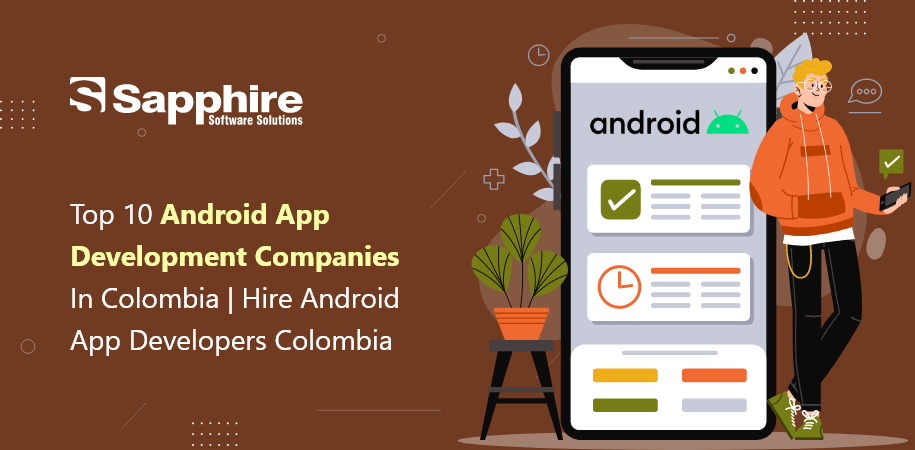
Hello folks!!
Today, we are going to discuss about the top 10 Android app development companies in Colombia.
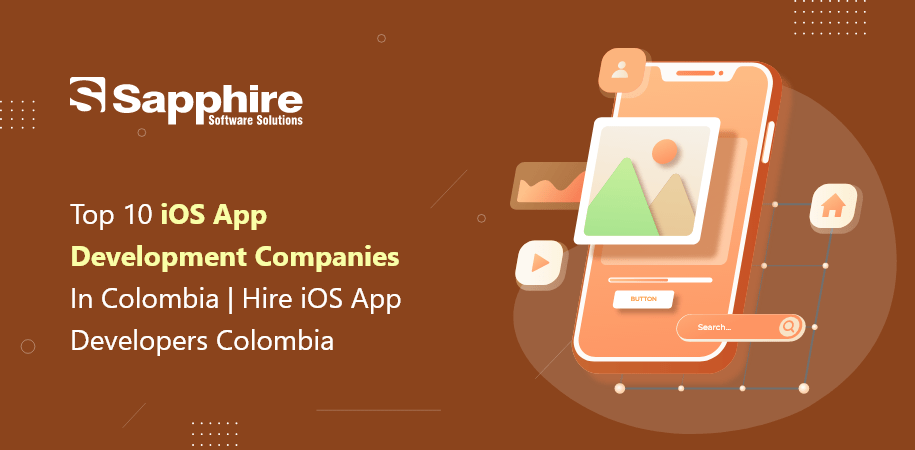
Hello folks!!
Today, we are going to discuss about the top iOS app development companies in Colombia.
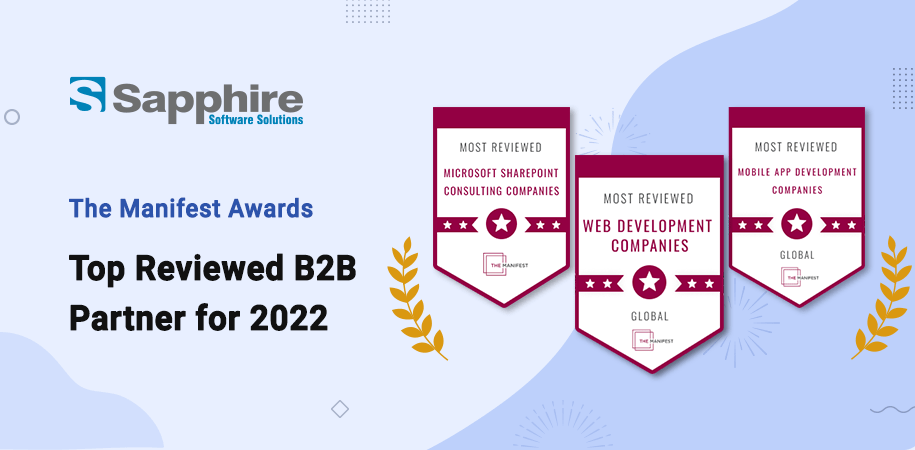
Create, enhance, and deliver — here at Sapphire Software Solutions, we’re committed to providing top-quality solutions ranging from Android development to complex Software development. For two decades, we’ve been guiding companies through their journeys and helping them harness the best out of the latest technologies.
Today, we’re extremely excited to share with you an exciting honor that our clients helped us achieve. Just recently, Sapphire Software Solutions was officially recognized as one of the top reviewed and recommended B2B companies on The Manifest Global Awards! According to their latest report, our team is a reliable partner for design,App development services, web development services, and Microsoft SharePoint solutions this 2022!
What an amazing honor! Looking back at how our journey started back in 2002, we knew we wanted to earn our clients’ gracious trust because we’ve always believed that they would be the catalyst for our success. Our perseverance has allowed us to make profound connections with our beloved clients which led us to this milestone.
The Manifest is a business news resource that helps browsers better understand the IT, marketing, and business services spaces. Their esteemed industry honors are given to top-tier B2B businesses that have close relationships with the clients they serve. Over the past 12 months, each awardee from a variety of categories received the most sincere recommendations and testimonials.
This recognition shows how much our clients rely on and trust us. We will always be appreciative of their help and support. From the bottom of our hearts, we at Sapphire Software Solutions are genuinely thankful for your support. We can’t wait to accomplish more victories with you.
What better way to celebrate this honor than to welcome more exciting opportunities and projects? Sapphire Software Solutions is excited to hear from you. Connect with us right away and let’s get down to business.
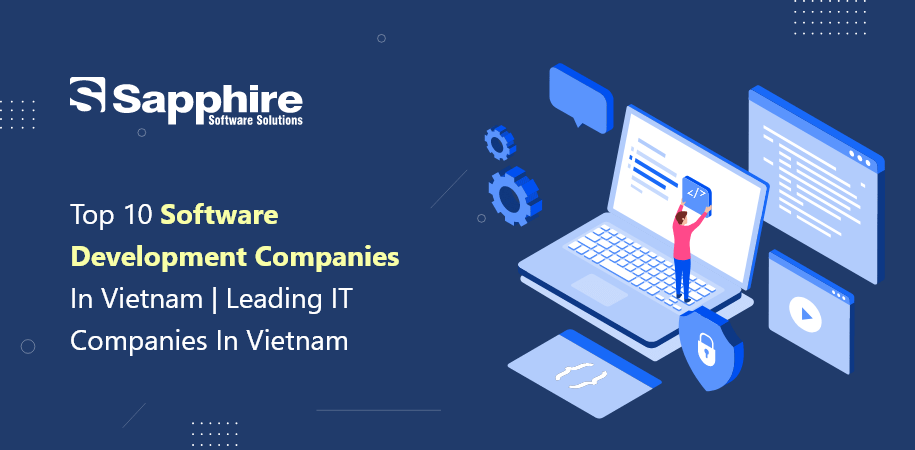
Hello folks!!
Today, we are going to discuss about the best software development companies in Vietnam.
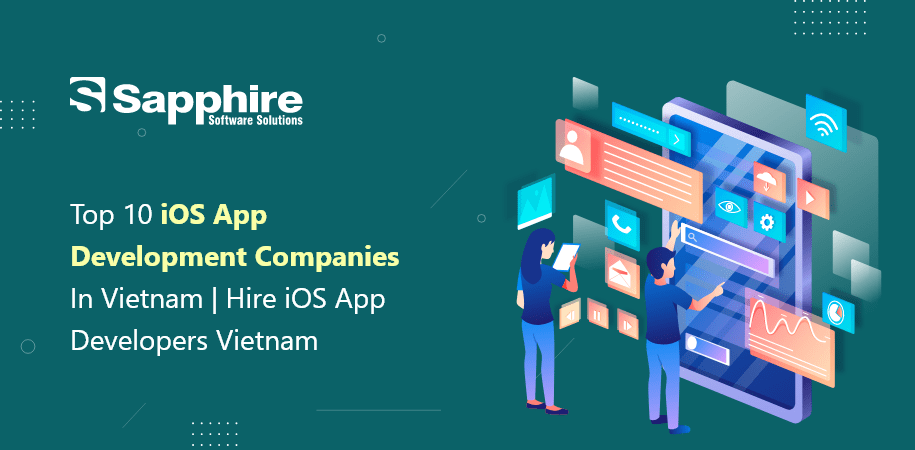
Hello folks!!
We are here to share the list of iOS app development companies.
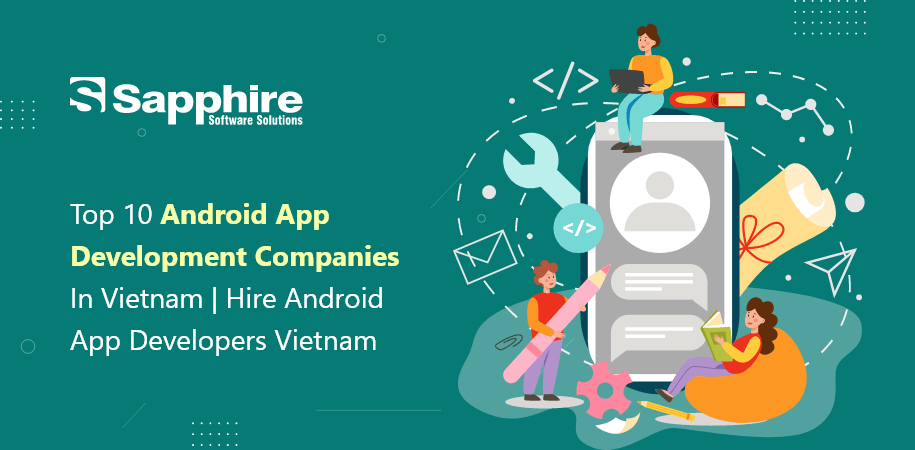
Are you looking for the best Android app development companies in Vietnam?
We’re here to share this!
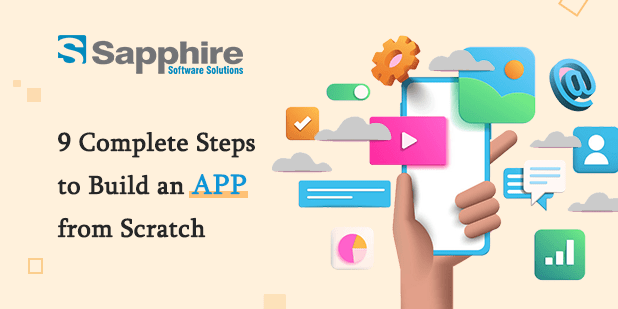
In the past, firms often outsourced mobile app development owing to limited resources and lengthy schedules. However, many small firms create mobile applications in-house due to the availability of helpful development platforms and software that does a significant portion of the groundwork. Check out the best mobile app development company in India.
Consequently, many businesses embrace mobile app development for internal or client usage. Although app development for the first time might be intimidating, it can also be tremendously gratifying. This detailed tutorial will walk you through the app development life cycle to assist you in creating a successful app.
Building an app does not happen overnight. There are numerous steps your development team must take to ensure a successful app launch. Continue reading to discover our simple nine-step guide for developing a new mobile application:
For these reasons, assembling a professional team is the first stage in designing a mobile app. To effectively create an app, a group of professionals with diverse backgrounds and areas of expertise would greatly assist.
Developing an app with top independent talent is facilitated by a dispersed team. Instead of being constrained by your expertise or geographical boundaries, you may choose independent specialists with distinct skill sets.
Start by doing market research to identify applications developed by your rivals. This study may provide insights into what clients appreciate and what you should change. You may describe what your competitors have done well and what they have done poorly.
It is also essential to comprehend the industry you are entering. You should be able to explain why the market needs your app and how you tackle issues differently. You can explore speaking with prospective users during this process. Interviewing clients for user input may provide detailed information about their requirements. It may also enable your team to design features competitors have missed, providing your app with a competitive advantage.
Next, define essential app functionalities. Now that you know what the market lacks and what your target consumers are looking for, you may design features that previous development teams still need to consider.
Most mobile app developers design app-mobile, intuitive, navigable, and customizable apps.
Simplicity, swiftness, and high picture quality are essential characteristics. These are all necessary aspects for a positive user experience, in addition to this foundation, including a list of features that might set your app distinct from the competition.
Consider allowing users to activate push alerts and social media integration. These are additional excellent methods to present consumers with relevant and tailored information, retaining their long-term engagement.
While there are many exciting features to consider as an app developer, remember to outline desired features with your business’s financial resources in mind. For instance, while you may like to incorporate face recognition for login capabilities, it may be costly. Remember that you may add new features or updates after the app is online.
A prototype is an intrecatve mockup that is a detailed sketch of how the app will look. A mockup usually includes images, the primary layout, and other elements and adheres to a consistent color scheme and typography. A well-constructed mockup should provide the development team with an idea of how the app should seem and function.
Among the benefits of a mockup are the following:
This next step in app development is one of your app’s most essential features: security. It is crucial to prevent cybercriminals from stealing user data. A single app vulnerability could cost your company millions of dollars and thousands of users.
As you begin coding, a few elements must be kept in mind. First, both the front end and the back end must be coded. Front-end development refers to the “face” of an application or what the end user sees. Back-end development entails the “behind the scenes” coding determining an app’s operation.
Agile project management is advantageous because it enables efficient, adaptive, and flexible coding. Consider that you are supervising a group of various developers (e.g., some are working on the front end and others on the back end). You will need to organize work processes so that the final output is coherent.
In addition, your team should develop in a test environment. To ensure the success of the final app, it is crucial to provide a suitable testing environment for the software’s execution. Considerations for the test environment include the database server, the front-end environment, the operating system, and the network. In addition, you may pick a tool for problem reporting to guarantee precise and detailed test data.
Once the app’s development part is completed, ensure you test the app thoroughly at each step to avoid any glitches. You must do the app testing for usability and functionality to make sure the app runs well on all platforms.
The app must pass a test group user’s examination before the app. Although the development team should have based features on customer demands, having someone who needs to learn the app can assist offer vital user input to guarantee it’s ready for many users with varying experience levels. Analytics may provide feedback after app activation. This information might assist the team in tweaking the app before launch.â€
Finally, app store publishing. App store requirements vary. Developers may concentrate on launching their app to the Google Play Store or Apple App Store. Focusing on a single platform simplifies app development since your team only has to design one app.
Developing an app for Google Play or Apple limits your reach. Both app stores have downsides, but designing a cross-platform app offers intense exposure and the possibility for additional consumers.
Yes, app development is an exciting journey. But, you need to hire a mobile app development services in India provider to build viable and intuitive apps. At Sapphire, you can hire mobile app developers hourly to work dedicatedly on your app development project.
Numerous software applications and internet resources, such as app builders, have made it simpler to create an app. Nevertheless, every programming language is just another language.
Nowadays, the mobile app is the most profitable way to interact with your customer and offer the best experience. An app allows you to stay ahead of your competitors and connect with your customers.
Including a search function is yet another excellent utility feature for retaining customers’ interest. The ability to search inside an app is a successful feature for e-commerce and social networking apps. However, it is less helpful for game-based applications. Consider adding cross-platform capability, or compatibility with both operating systems, as an additional feature.
App design and development is not an overnight process. The first step of designing an app is getting in touch with a professional app development company to ensure you are on the right path.
Searching for the best mobile app development companies?
We’re here to share that!
The design and development processes of agile software development are done iteratively. In agile development services, the traditionally long steps of requirements, development, and testing are broken down into more manageable chunks of work, enabling teams to produce software more regularly. Check out the best software development services in USA.
Methodologies that fall under the category of agile software development (also known as system development) include things like Scrum, Kanban, Scrumban, Disciplined Agile 2.0, adaptive software development, Agile modeling, feature-driven development (FDD), extreme programming (XP), and Learn software development.
Every Agile technique has the same overarching objective: to respond effectively to change and produce functioning software in the shortest amount of time. The stages of software development agile are approached somewhat differently depending on which methodology is used. In addition, even while each team is working toward the same objective, the process flow they follow may differ for each project or circumstance. An illustration of this would be the stages of conception, inception, construction, release, production, and retirement that are included in the Agile software
development lifecycle.
The following steps make up the flow of the Agile development company process: idea, initiation, iteration or construction, release, production, and retirement
Concept:
Imagine and arrange the projects in priority order.
Inception:
Find out who will be on the team, decide how much money will be needed, and discuss the first conditions and criteria.
Iteration or Construction:
The development team is working hard to provide functional software based on the iteration requirements and feedback.
Release:
Testing for quality assurance (QA), including internal and external training, the development of documentation, and finally, putting the iteration into production.
Production:
Ongoing assistance with the software.
Retirement:
Activities associated with the end of life include customer notice and migration.
There may be several projects that are going at the same time, various sprints or iterations that are running on separate product lines, and a number of internal and external clients with a variety of business demands.
The iterative process predominates throughout the whole of the agile software development lifecycle. Customers will be allowed to use the software and supporting materials (such as documentation) made accessible throughout each iteration of the development process. This will continue until the final product is finished. The duration of each iteration is typically between two and four weeks, and there is a predetermined deadline for its completion. The iteration process is quite thorough, and the scope of each iteration is only allowed to be as extensive as the amount of available time. Hire software developers in USA from us!
Throughout an Agile software development lifecycle, there will be several iterations, each of which will adhere to its workflow. Customers and other business stakeholders submit input during an iteration to verify that the features satisfy the requirements outlined by those customers.
Requirements:
Determine the needs for the iteration using the product backlog, the sprint backlog, and the comments and suggestions from customers and other stakeholders.
Development:
Create and create software depending on the requirements that have been stated.
Testing:
Testing for quality assurance (QA), training both internally and externally, and the development of documentation. These parts of the iteration process, ensure that each release meets the standards expected by users and stakeholders. Alongside these practices, the automation testing platforms listed by Functionize give a systematic approach to further validation of the software quality through automated means. These tools can simulate a multitude of user interactions and scenarios, identifying potential issues before they impact the user experience.
Delivery:
Integration into production, together with the delivery of the functioning iteration
Feedback:
Feedback from customers and other stakeholders should be analyzed and included in the subsequent iteration’s specifications.
The remaining steps of the process are repeated until the product backlog has been eliminated, even though other features may be added to the product backlog at any time throughout the project. As a direct consequence, the flow of the software development Agile process is more similar to a loop than a linear process.
In Scrum, the direction of the flow of work is determined through a sequence of meetings, which are as follows:
Based on the product backlog, the types of work that will be included in each future sprint are selected via “Sprint Planning.”
The Scrum master uses the information that is acquired. He is in charge of managing the meetings, updating the burndown chart, and seek for solutions to eliminate the impediments that have been identified.
A meeting called a “sprint review” takes place after each iteration’s “Sprint” to assess the work that was finished, examine the product backlog, and decide on the tasks that are still outstanding. The products are the primary topic of reviews.
The last meeting is the sprint retrospective meeting, which takes place after each sprint and discusses what went well and what aspects of the process may need improvement. The process is the primary focus of retrospectives.
As is the case with any approach, this one has both benefits and downsides (Read about the advantages and disadvantages of Agile). When customers and other project stakeholders are available to provide input, when functional portions of the software are needed quickly, when flexibility is desired to accommodate changing requirements, and when the team is co-located and able to collaborate effectively, the agile method is the approach that is most suitable to use. Other favorable conditions include:
Implementing agile practices inside your company might seem daunting, just like any other change. The following is a list of four actions that will assist in facilitating the implementation of agile workflow:
Daily Meetings:
Hold stand-up meetings regularly or every day to keep the lines of communication open, ensure that personnel is held responsible, and ensure that each iteration moves ahead.
Live Demonstrations:
Show the progress you’ve made by putting on live demos of the finished result of each iteration.
Share Feedback:
Before beginning the subsequent iteration, collect input from the various stakeholders and consumers and distribute it to the whole team.
Remain Agile:
Modify your process depending on your input to guarantee that each iteration is an improvement over the one before it.
Bottom Line
As an Agile Software Development company, we can help you enhance communication and boost work velocity, allowing you to get more done. Get in touch with us to know more about our Software Development Agile services.
Hello Folks!!
Are you looking for web development companies in Vietnam?